Use of Cookies
Our website uses cookies to facilitate and improve your online experience.
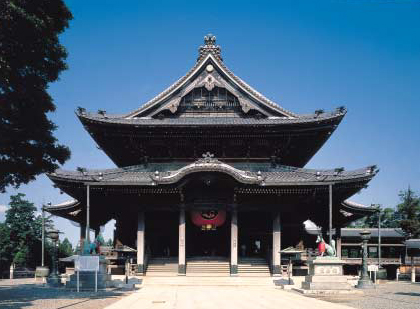
The Splendid Honden, where the guardian deity Dakini Shinten is enshrined, is built entirely of zelkova wood.
Tokai Gieki Zenji founded the famous Soto temple Toyokawa Kaku Myogonji in 1441, at Toyokawa, a strategic transport point in Aichi Prefecture. Throughout the year, people visit the spacious (about 1,000 ares) compound, in which stand more than 90 large and small buildings, including the Dharma Hall, housing the temple's principle object of worship, a statue of the Thousand-arm Kannon, and the Saishoden shoin,which can be converted into one vast space by removing 12 sliding partitions.
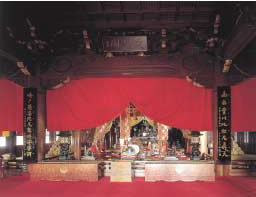
Statues of white foxes stand beside the altar to Toyokawa Dakini Shinten.
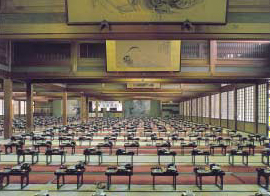
Lectures on Buddhism and receptions are held in the Saishoden, which can accommodate 1,000 people.
In the Honden adjacent to the Dharma Hall is a statue of the deity Dakini Shinten, with accompanying statues of white foxes, companions of the harvest god Inari (Dakini Shinten). Once when the Kangan Giin Zenji, a disciple of Dogen Zenji and the Dharma ancestor of the founder of Myogonji, was returning from China, Dakini Shinten appeared on the sea astride a white fox with a Fabulous Jewel in his hand and gave him a mantra. Because of this connection with Dakini Shinten or Inari, Myogonji is now known as the Toyokawa Inari.
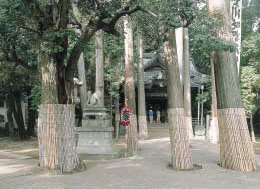
The Oku-no-in, where Shinto ceremonies are conducted at festival time, is located in a dense stand of trees deep within the temple compound.
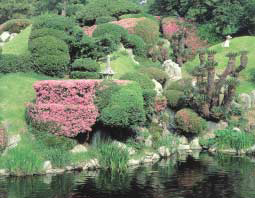
The white fox is to be seen in the famous and spacious (12.17 ares) garden, created in the 17th century.
In the Myogonji Garden (designated a national scenic attraction in 1941), old trees provide a background for carefully pruned low shrubs including seasonally flowering azaleas and sasanqua camellias that reflect in a pond where, to the delight of visitors, carp and turtles swim. Large crowds gather at Myogonji for its big spring and autumn festivals. Ancient court music (gagaku) and an archery meet are featured in the spring festival. The paper lanterns gracing the autumn festival are among the largest in Japan.
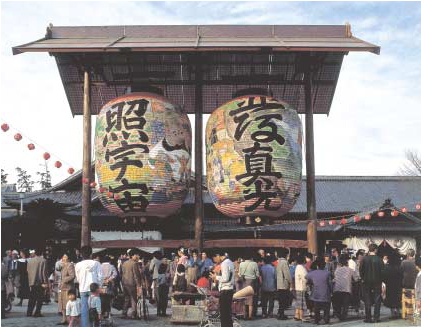
Candles weighing 15 kilograms, 35 centimeters thick, and a meter tall stand in those immense paper lanterns.
Access Japan Railways to Toyohashi. Change to the Iida line for Toyokawa Station. Or take the Meitetsu Toyokawa Line from Nagoya Station to the Toyokawa Inari Station. Five minutes' walk.
Address: 1 Toyokawa-cho, Toyokawa, Aichi Prefecture 442-8538, Japan